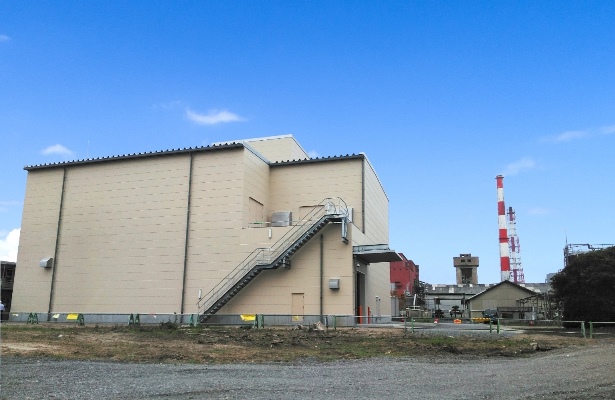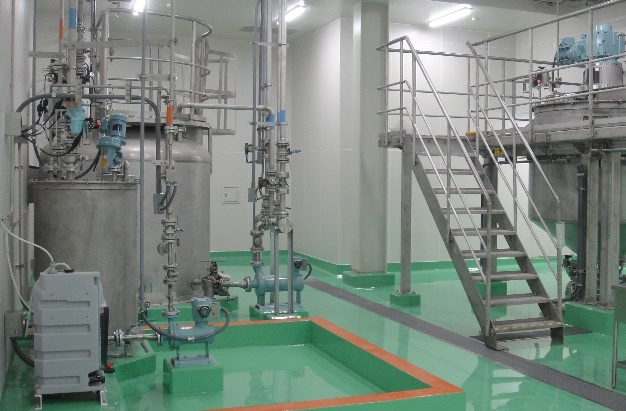Press ReleasesNippon Paper Industries Launches a Cellulose Nanofiber Mass Production Facility for Food and Cosmetics at the Gotsu MillThe Annual Production Capacity is more than 30 Tons, and Expected to Accelerate the Development of Applications for Additives.
Nippon Paper Industries Co., Ltd.
Nippon Paper Industries Co., Ltd. (President: Fumio Manoshiro; hereinafter "Nippon Paper Industries") announces the launch of the cellulose nanofiber (hereinafter "CNF") mass production facility for food and cosmetics at the Gotsu Mill (Gotsu City, Shimane Prefecture).


The CNF mass production facility at the Gotsu Mill
The facility for the CNF production at the Gotsu Mill has more than 30 tons and produces carboxymethylated CNF (hereinafter "CM-CNF") based on the technologies through which the mill produces carboxymethyl celluloses (hereinafter "CMC") for food additives for many years.
CM-CNF is microfibrillated cellulose with fiber widths of several to dozens of nanometers. It is expected to be new additives for food and cosmetics utilizing its characteristics conventional additives or thickeners such as CMC don't have. Some of the characteristics are low temperature dependence of viscosity, non-thread forming property (non-stickness) and thixotropy*1. We will provide powder form CNF at the moisture content of less than 10% through our established technologies to produce powder form CNF from dispersed CNF in water at the facility.
Nippon Paper Industries launched the production of completely individualized TEMPO oxidized*2 CNF on a world's largest scale production facility at the Ishinomaki Mill, the annual production capacity of which facility is 500 tons. Have been developed industrial applications of the CNF including functional sheets, functional additives and nanocomposites. In June, Nippon Paper Industries also launched a demonstration plant at the Fuji Mill for CNF-reinforced plastic*3 by mixing CNF with plastics ,the annual production capacity is more than 10 tons. Have currently been developed applications of the CNF-reinforced plastics.
We have a long experience of the total utilization of wood at the Gotsu Mill including dissolving pulp and functional chemicals. We will, furthermore, focus on developing the market for the CNF with the original additives applying CNF in addition to our conventional cellulose products.
As a comprehensive biomass company shaping the future with trees, the Company will have been developing production technologies for CNFs suitable for a variety of applications, will have built the supply chain system as soon as possible and will accelerate its efforts to develop the markets for the CNF and the new materials.
(Note 1) Thixotropy is the property exhibited by certain gels of becoming fluid when stirred or shaken and returning to the semisolid state upon standing.
(Note 2) A chemical denaturation method for cellulose by TEMPO catalysis, developed by Professor Akira Isogai et al of the Department of Biomaterial Sciences, Graduate School of Agricultural and Life Sciences at The University of Tokyo. Using this method pulp is easily defibrated, and it is possible to obtain nanofiber with uniform width.
(Note 3) CNF reinforced plastic is produced by mixing CNF and plastics, such as polypropylene (PP), polyethylene (PE), nylon and other plastic, resulting in additional strength.